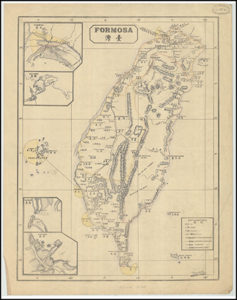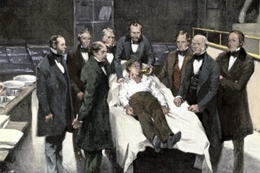Tag: history of science
Primary Sources: Wiley Digital Archives of Academic Societies
 The Library has recently acquired the digital archives of three Academic Societies:
The Library has recently acquired the digital archives of three Academic Societies:
Royal Anthropological Institute Collection
Royal Geographic Society Collection
The New York Academy of Sciences Collection
The collections include research data, correspondence, photographs, drawings, and writings of society members, as well as administrative records, proceedings, reports, and a wide variety of other materials.
Primary Sources: Science, Technology, and Medicine, 1780-1925, Pt. 1
 The Library has recently acquired a new module in Nineteenth Century Collections Online: Science, Technology, and Medicine: 1780-1925, Part 1. This includes:
The Library has recently acquired a new module in Nineteenth Century Collections Online: Science, Technology, and Medicine: 1780-1925, Part 1. This includes:
Academy of Natural Sciences of Philadelphia: Minutes and Correspondence
Minutes, correspondence, archival collection summaries, membership lists, and donation ledgers from the academy’s founding in 1812 until 1924 (and 1925 in the case of the minutes).
American Medical Periodicals
A collection of serials covering the entire scope of medical history in the nineteenth-century United States.
Collections of primarily monographs from the 19th century, sourced from the Huntington Library.
Astronomy and Astrophysics
Electricity and Electromagnetism
Civil Engineering
Color Theory and Practice
Evolution and the Origin of Species
Mathematics
Reports of Explorations Printed in the Documents of the United States Government
Throughout the 19th century the U.S. government sent out a wide variety of missions to explore and document the country, its coastal waters, and beyond. This collection includes primarily monographs and reports held at the Library of Congress.
Scientific and Technical Periodicals from the Royal Society of London’s Catalogue of Scientific Papers 1800-1900
A collection of international publications held at the Academy of Natural Sciences of Drexel University.
Resource: IsisCB Explore – Open Access version of the Isis Current Bibliography
Accessible to anyone on the web, IsisCB Explore is a completely open access service made possible by the History of Science Society with support from the University of Oklahoma.
IsisCB Explore is a research tool for the history of science, whose core dataset comes from bibliographical citations in the Isis Bibliography of the History of Science. The IsisCB currently contains 40 years of citation data from 1974 to 2014 and includes citations (items from the bibliography that have been classified and indexed) and Authorities (records that include both subject terms that classify citations).
IsisCB is built to work well with social media tools, so that the user community can actively participate in building the resource. After signing in to an account, users can provide comments, add further information, and suggest weblinks and other materials other scholars might find useful.
The resource currently includes:
- Nearly 200,000 interlinked bibliographic citations to books, chapters, articles, dissertations, and reviews from the Isis Bibliography of the History of Science 1974 to present. It will be annually updated.
- An authority index of over 150,000 curated entries. Includes historical concepts, persons, and institutions. Also indexes scholars, publishers, journals, and degree granting institutions.
- User accounts with the ability to save searches.
- Zotero integration. Allows users to save individual citations as well as collected results.
There are some instructional videos on the IsisCB Explore YouTube Channel.
Primary Sources: Scientific American Archive (1845-2005) and Scientific American Supplement & Builders Archive Collection
UC Berkeley now has access to both the Scientific American Archive (1845-2005) and Scientific American Supplement & Builders Archive Collection, which were licensed by the California Digital Library. CDL shared this information about the resource:
“Scientific American is the “oldest continually published magazine in the U.S.” Thus, its archive is an amazing resource, providing a wealth of historic information in all areas of science and technology. The coverage, going back to the first four-page issue published in 1845, and the quality of the documents–both text and images–is excellent. The archive is divided into four segments, 2005-1993, 1992-1948, 1947-1910, and 1909-1845, and includes some 133,000 articles. Good-quality PDFs are available for the entire archive; users can even browse an entire issue as a PDF file. There are options for both basic and advanced searching via Nature.com’s interface. Since the coverage goes back more than 160 years, the archive contains interesting articles by or about many noted scientists. For example, a 1955 issue of Scientific American features an interview with Albert Einstein, and there are articles by and about Linus Pauling, Francis Crick, and James Watson, to name a few.
“Additionally, the Supplement & Builders Archive Collection has also been licensed. The recently digitized Scientific American Supplement & Builders Archive Collection provides access to more than 2,500 issues from the Supplement and Builders publications. Together, these five collections provide unique insight into historic breakthroughs in science, technology, medicine and architecture.”
Exhibit: Siméon-Denis Poisson: Mathematics in the Service of Science
Primary Sources: The Bassi Veratti Collection
From Stanford Library’s News Release:
“In the eighteenth century, Laura Bassi was a scientist, professor at the University of Bologna, and member of the Bologna Academy of Sciences. Among the very first female professional scholars, her life (1711-1778) and work can tell us much about the personal and professional lives of early women scientists, their place in Enlightenment intellectual networks, as well as the spread of Newtonian physics in the Italian peninsula. Stanford history professor Paula Findlen is currently completing a scholarly biography on Bassi, while the Stanford University Libraries – in partnership with the Biblioteca comunale dell’Archiginnasio di Bologna and the Istituto per i Beni Artistici, Culturali e Naturali della Regione Emilia-Romagna – has brought Bassi’s family archive to the web.”
“The Bassi Veratti Collection web site developed and hosted by Stanford Libraries features high-resolution digital images of the complete contents of the Bassi e famiglia Veratti Archive in a robust discovery and display environment. This remarkable project undertaken by the Digital Library Systems and Services department is notable for the extent of cooperation with colleagues in Bologna. A fully bilingual website, it showcases the way that new technologies have enhanced the traditional print archive. 672 letters, diplomas, poems, and other documents have been digitized, while the richly detailed inventory created by Archiginnasio archivists has been transformed into a bilingual and fully-indexed search engine to the collection. These two components have been seamlessly united in an intuitive and well-designed scholarly website.”

